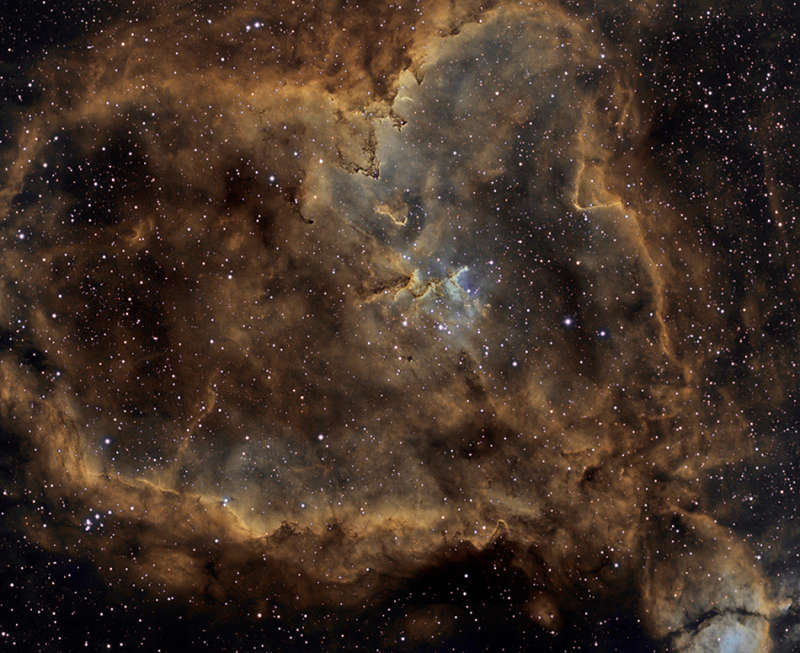
|
Credit & Copyright: César Blanco
González
Explanation:
Sprawling across almost 200 light-years,
emission
nebula IC 1805
is a mix of glowing interstellar gas and dark dust clouds
about 7,500 light-years away in the Perseus
spiral arm of our galaxy.
Stars were born in this region
whose nickname, the Heart Nebula, derives from its
Valentine's-Day-appropriate shape.
The clouds themselves are shaped by stellar winds and radiation from
massive hot stars in the nebula's newborn star cluster
Melotte 15 about 1.5 million years young.
This
deep telescopic image
maps the pervasive light of narrow
emission lines
from atoms in the nebula to a color
palette made popular
in Hubble images of star forming regions.
The field of view spans about two degrees
on the sky or four times the diameter of a full moon.
The cosmic heart is found in the constellation of
Cassiopeia, the boastful
mythical Queen of
Aethiopia .
|
January February March April May June July August September October November December |
| ||||||||||||||||||||||||||||||||||||||||||||||||
NASA Web Site Statements, Warnings, and Disclaimers
NASA Official: Jay Norris. Specific rights apply.
A service of: LHEA at NASA / GSFC
& Michigan Tech. U.
Based on Astronomy Picture
Of the Day
Publications with keywords: emission nebula - star formation
Publications with words: emission nebula - star formation
See also:
